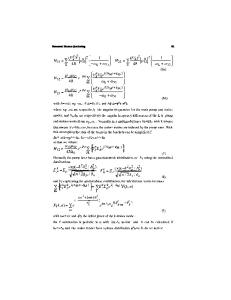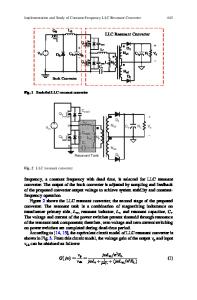Resonant Raman study of polyparaphenylene-based carbons
- PDF / 217,036 Bytes
- 8 Pages / 612 x 792 pts (letter) Page_size
- 98 Downloads / 324 Views
MATERIALS RESEARCH
Welcome
Comments
Help
Resonant Raman study of polyparaphenylene-based carbons A. Marucci, S. D. M. Brown, M. A. Pimenta, and M. J. Matthews Department of Physics, Massachusetts Institute of Technology, Cambridge, Massachusetts 02139
M. S. Dresselhaus Department of Electrical Engineering and Computer Science and Department of Physics, Massachusetts Institute of Technology, Cambridge, Massachusetts 02139
K. Nishimura and M. Endo Faculty of Engineering, Shinshu University, 500 Wakasato, Nagano 380, Japan (Received 6 July 1998; accepted 16 September 1998)
A resonant Raman study of polyparaphenylene (PPP) prepared by the Kovacic and the Yamamoto methods and heat-treated at temperatures THT between 650 and 750 ±C has been performed using different laser excitation energies E laser between 1.92 and 3.05 eV. For samples treated at low THT , the Raman spectra change with E laser , and this behavior is ascribed to the coexistence of two forms of the PPP polymer (benzenoid and quinoid) as well as a disordered carbon material. For higher THT samples, only a dispersion of the position of the Raman band as a function of E laser is observed, and this is explained as due to the carbonization of the original polymer. The transition temperature between these two regions of resonance behavior is lower for the Yamamoto-PPP samples than for the Kovacic-PPP samples.
I. INTRODUCTION
In recent years much attention has been focused on carbon materials in general in search of the form of carbon that could host the largest amount of Li for the fabrication of the negative electrode in lithium rechargeable batteries.1,2 This kind of battery is an essential element in the development of some portable devices such as lap-top computers and videocameras. In order to improve the efficiency of such batteries and to decrease their weight, it is important to find the most suitable host material, i.e., the one that has the highest reversible lithium uptake per gram of material and an appropriate discharge voltage profile.3 Until a few years ago, it was believed that carbon materials with a regular structure, such as graphite, would be the best host material for Li uptake, since the dopant could be inserted between each layer of the graphene sheets. It has thus been found that the maximum Li uptake from a first stage graphite intercalation compound4 is 372 mAhyg, which is equivalent to the stoichiometric ratio Li : C 1 : 6. Recently, greater attention has been focused on the Li uptake from disordered carbon materials, and it has been found that polyparaphenylene (PPP) prepared using the Kovacic method and heat-treated at 700 ±C exhibits a Li uptake of 1170 mAhyg, nearly three times greater than that of graphite (equivalent to Li : C 1 : 2).5 For comparison, the Li uptake from Yamamoto-PPP heattreated at the same temperature is five times smaller.6 This discovery significantly increased the interest of the scientific world in the structure of this polymer, which consists of chains of phenylene rings linked in the para 1124
Data Loading...











